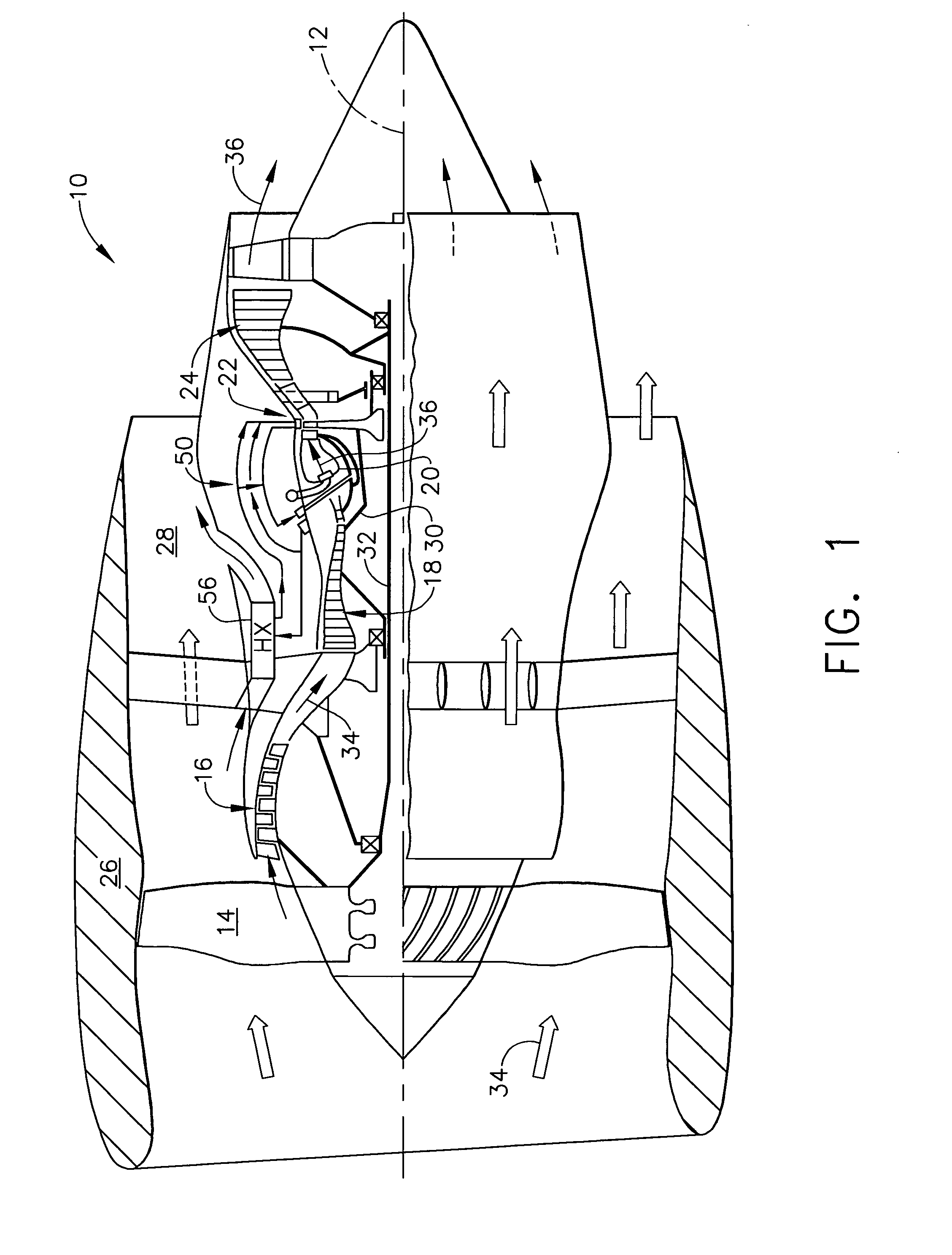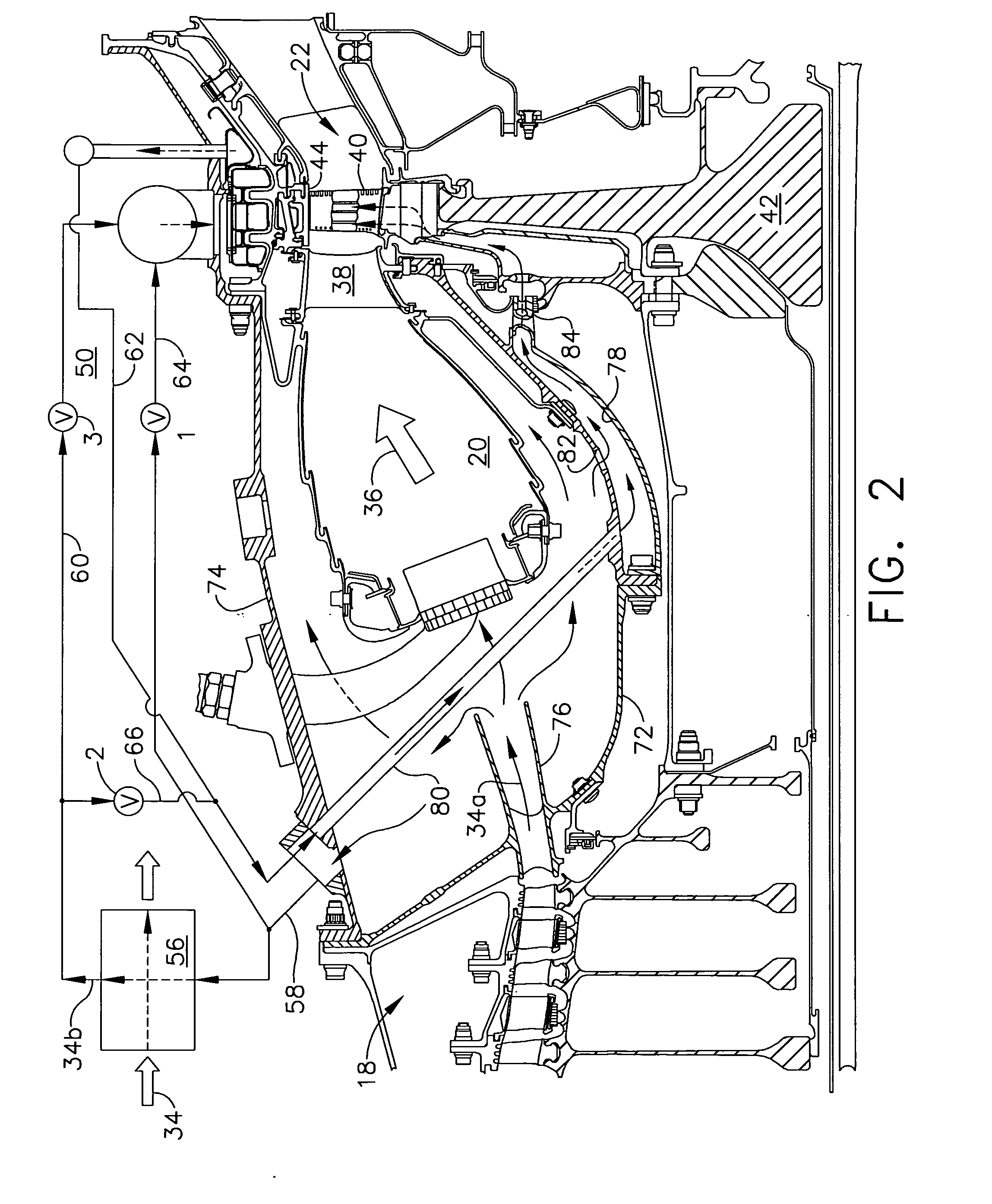Compound clearance control engine
a technology of compound clearance control and engine, which is applied in combination engines, machines/engines, mechanical equipment, etc., can solve the problems of reducing the overall reducing the efficiency of the engine, and losing the use of turbine cooling from the combustion cycle, so as to improve the efficiency and improve the effect of active clearance control
- Summary
- Abstract
- Description
- Claims
- Application Information
AI Technical Summary
Benefits of technology
Problems solved by technology
Method used
Image
Examples
Embodiment Construction
[0023]Illustrated schematically in FIG. 1 is an exemplary turbofan aircraft gas turbine engine 10. The engine is axisymmetrical about a longitudinal or axial centerline axis 12 and is suitably mounted to the wing or a fuselage of an aircraft (not shown) for powering an aircraft in flight in an exemplary application.
[0024]The engine includes in serial flow communication a fan 14, a low pressure or booster compressor 16, a high pressure (HP) compressor 18, an annular combustor 20, a high pressure turbine (HPT) 22, and a low pressure turbine (LPT) 24.
[0025]An annular nacelle 26 surrounds the fan 14 and defines an annular bypass duct 28 extending aft around the booster compressor 16. A first drive shaft 30 joins the HPT 22 to the HP compressor 18, and a second drive shaft 32 joins the LPT 24 to the fan 14 and booster compressor 16. The two drive shafts are suitably mounted in bearings in corresponding frames within- the engine in a conventional configuration of the various engine compon...
PUM
 Login to View More
Login to View More Abstract
Description
Claims
Application Information
 Login to View More
Login to View More - R&D
- Intellectual Property
- Life Sciences
- Materials
- Tech Scout
- Unparalleled Data Quality
- Higher Quality Content
- 60% Fewer Hallucinations
Browse by: Latest US Patents, China's latest patents, Technical Efficacy Thesaurus, Application Domain, Technology Topic, Popular Technical Reports.
© 2025 PatSnap. All rights reserved.Legal|Privacy policy|Modern Slavery Act Transparency Statement|Sitemap|About US| Contact US: help@patsnap.com



